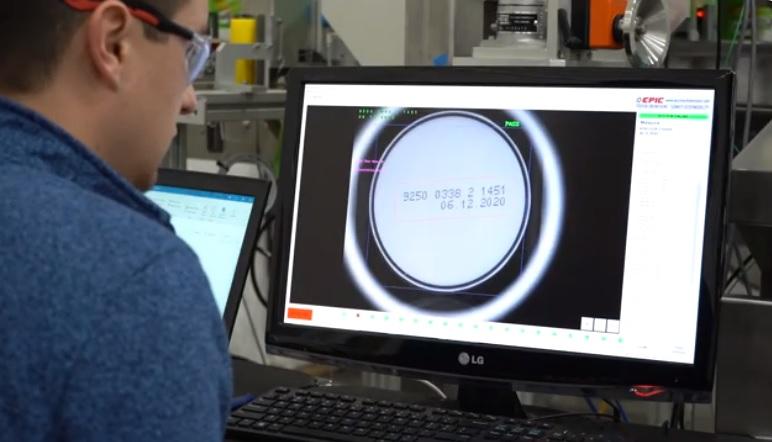Optical character recognition (OCR) has revolutionized the way the business world automates document processing.
OCR is a well-known and ground-breaking method for extracting text from photographs and turning this into machine-readable text information. The use of hand-held, printed, or handwritten documents as a traditional method of data storage has a number of limitations and drawbacks, including the need to manually filter through pages to find the information needed, difficulty assigning space for storage, and the number of resources (ink, paper, etc.) utilized during the process. OCR makes it possible to digitize documents in any language, save them to the cloud, and provide quick access. The digital records can also be utilized to gain new knowledge and enrich current studies.
However, the quality and precision of this technology are not always sufficient for every application. The more complex the document, the less accurate OCR becomes. This is especially true for engineering drawings. Although standard OCR technologies may not be ideal for this purpose, there are other ways to achieve document processing goals with OCR technology.
Below, we will explore a few viable solutions to give you a general idea, without going into too much technical detail.
Challenges of Recognizing Engineering Drawings
When it comes to technical drawings, OCR technology faces difficulties in understanding the meaning of individual text elements. Technology can read the text, but not understand its meaning. There are a number of opportunities that engineers and manufacturers can consider if automatic technical document recognition is properly configured.
Here are the most significant challenges that arise:
To achieve analysis of complex technical documents, engineers must train artificial intelligence (AI) models. Just like humans, AI models need experience and training to understand these drawings.
One of the challenges of recognizing plans and engineering drawings is that the software must understand how to separate the different views of the drawing. These are different parts of the drawing that give a basic idea of its layout. By separating the views and understanding how they relate to each other, the software can calculate the frame around the drawing.
This process can involve several challenges:
- Views may overlap.
- Views can be damaged.
- Marks can be equidistant from two views.
- Views can be nested.
The relationship between views is another possible problem. You must consider whether the view is a flat part of the diagram, a turned part, a block, or something else. In addition, there may be other problems such as related dimensions, missing labels, implicitly defined heights through references to the standard, or other problems.
It is important to note that generic OCR cannot reliably understand text in drawings that are surrounded by graphic elements such as lines, symbols, and labels. Because of this, we need to dig deeper into OCR with machine learning, which will be more useful for this application.
Pre-trained and Customized OCR Models
There is no shortage of OCR software on the market, but not all software can be trained or modified by the user. As we have learned, training can be necessary to analyze your engineering drawings.
However, there are OCR tools that are designed for these types of drawings.
Pre-trained OCR Tools
Here are some common options for OCR engineering drawings:
- ABBYY FineReader: This versatile drawing interpretation software offers OCR technology with text recognition capabilities. It supports different image formats, layout retention, data export, and integrations.
- Adobe Acrobat Pro: In addition to editing, viewing, and managing PDFs, Acrobat lets you scan OCR documents and drawings, extract text, and search. It supports different languages and allows users to configure options.
- Bluebeam Revu: Another popular PDF application, Bluebeam Revu offers OCR technologies for extracting text from engineering drawings.
- AutoCAD: Short for Computer Aided Design, AutoCAD supports OCR plugins to interpret drawings and convert them into editable CAD elements.
- PlanGrid: This software includes OCR interpretation for drawings right out of the box. With this feature, you can load images of drawings and then extract, organize, index, and search the text.
- Textract: This cloud-based AWS option enables OCR analysis of documents and extraction of elements such as tables from documents. It can also recognize elements from drawings and provides APIs for integration with other applications.
- Butler OCR: Providing developers with document extraction APIs, Butler OCR combines machine learning with human review to improve document recognition accuracy.
Customized OCR Solutions
If you are looking for custom OCR solutions that can be trained to achieve better automatic data extraction from engineering drawings and adapt to your specific data format, here are some popular options:
- Tesseract: This flexible, open-source OCR engine maintained by Google can be trained on custom data to recognize drawing-specific characters and symbols.
- OpenCV: Open-Source Computer Vision Library can be combined with OCR tools like Tesseract to build custom interpretation solutions. Its image processing and analysis functions can improve OCR accuracy on engineering drawings when used properly.
Apart from these tools, it is also possible to develop custom machine-learning models independently. By using models to train on labeled datasets and frameworks like TensorFlow or PyTorch, these solutions can be fine-tuned to recognize specific drawing elements and achieve greater accuracy for an organization’s needs.
Pre-trained models offer convenience and ease of use, but may not be as effective at interpreting engineering drawings as custom solutions. These custom solutions also require additional resources and expertise to develop and maintain.
Customized solutions require additional financial resources and manpower for development. We would recommend starting with a proof of concept (PoC) to validate technical capabilities and a minimum viable product (MVP) to check the market perception of the project before investing heavily in a custom OCR solution.
The Process of Implementing the OCR Module for Reading Engineering Drawings
The best place to start building OCR software for engineering drawings would be to analyze the available open-source tools. If you exhaust the options of open-source tools, you may need to consider closed-source options with API (application programming interface) integration.
Building an OCR solution from scratch is impractical as it requires a huge training dataset. This is difficult and expensive to collect and requires a lot of resources to train the model. In most cases, fine-tuning existing models should meet your needs.
What Does the Process Look Like?
The process from this point on looks something like this:
- Consider the requirements: You need to understand what types of engineering drawings your application needs to handle and what functionality is needed to achieve that goal.
- Image capture and post-processing: Consider the devices you plan to use to capture images. Additional preprocessing steps may be required to improve the quality of the results. This can include touring, resizing, noise reduction, and more.
- OCR integration: Consider the OCR engine that will work best with your application. OCR libraries have APIs that allow your application to extract text from captured images. It is important to consider open-source OCR solutions to save costs. Third-party APIs may become unreliable in terms of price over time or lose support.
- Text recognition and processing: Next, it is time to implement the logic for text processing and recognition. Some possible tasks you can consider in this step are text cleaning, language recognition, or any other techniques that can provide clearer text recognition results.
- UI and UX: It is important to have a user interface that is easy to use so that the user can effectively use the application to capture images and run OCR. The results should be presented to the user in a way that is easy to understand, meaning to reach a high level of user experience.
- Testing: Thoroughly test the application to ensure its accuracy and usability. User feedback is key to this process.
Examples of OCR Technology’s Uses
Data digitization and automation: Using OCR, manual data entry may be mechanized and digitized. Automation decreases the likelihood of human mistakes, while digitalization makes data access easier, boosts data security, boosts cost effectiveness, frees up space, and is also kinder to the environment because it uses less paper and ink.
- Verification of documents: This technology may be used to validate crucial papers like passports, VISAs, and other identification documents.
- Automated vehicle number plate identification: Violations may be swiftly dealt with and traffic laws effectively enforced by employing CCTV camera photos to identify offenders.
- People with visual impairments can be helped by OCR technology, which reads printed text aloud.
- OCR can translate text from one language to another, which is a tool that might be helpful while traveling or meeting people from various countries.
- Evidence management: For defense/police authorities, managing and sorting through voluminous evidence is an essential step in the investigative process. Using OCR technology can facilitate rapid access to pertinent evidence and the development of image-word connections that enhance the searchability of the evidence.
- Managing auditing: Using OCR technology, bank and credit card statements may be evaluated with almost perfect precision to aid in discovering fraudulent transactions, irregularities, or aberrations by combing through digital databases. This process is far quicker than manually going through mountains of paper. Additionally, this will assist in reducing auditory costs.
- Live casinos: OCR technologies play a crucial role in online casinos, including those at Topcasinoexpert.com/country/kenya/. They aid in simulating the atmosphere of physical casinos and gather useful information about the game, such as how the dice are rolled and players’ performance.
- EdTech: Following the COVID-19 epidemic, more students were and still are studying at home. EdTech companies are utilizing OCR technology to assist students while they study online. By using the OCR technology–AI combo to extract text from the photographs submitted by students and match it with the correct answer from its database, some APAC-based online tutoring companies (Asia-Pacific), for example, are enabling the doubt-solving portion of online learning.
What Future Holds for OCR Technology
According to research released by Transparency Market Research, the worldwide OCR market is anticipated to grow at a CAGR of 15.2% from 2020 to 2030, reaching an estimated value of US$ 51,527.0 million.
Even though OCR technology has advanced over the years, it is still difficult to extract text from a picture. One of the main obstacles to efficiently utilizing OCR is a lack of measurements. Another area that needs improvement and is currently in the experimental stages is the conversion of handwritten text to digital text; while numbers can typically be identified reliably, alphabets are more difficult due to variations in typeface and writing styles.
Conclusion
When faced with the challenges of creating OCR software for complex engineering drawings, organizations have a number of options available to approach the problem. From various pre-trained models to customizable tools to create personalized solutions, businesses can find ways to efficiently analyze, index, and search drawings and other complex documents.
All it takes is a little ingenuity, creativity, and time to create a solution that meets their needs.




